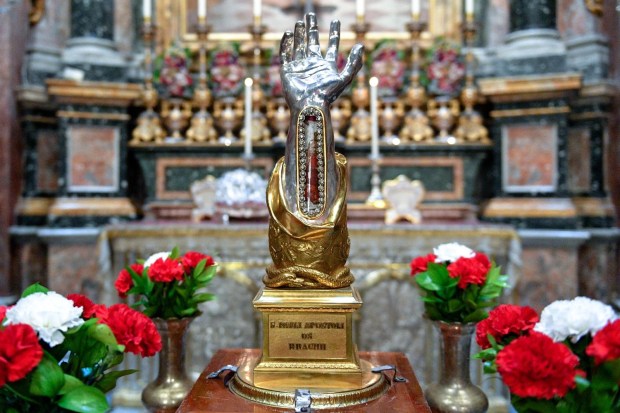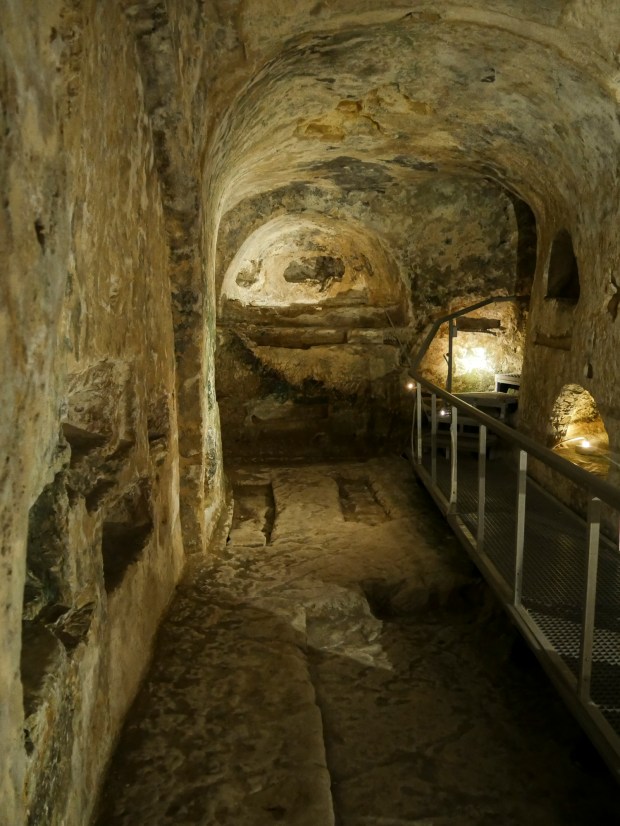Lenten Campaign 2025
This content is free of charge, as are all our articles.
Support us with a donation that is tax-deductible and enable us to continue to reach millions of readers.
In the year 60 AD, a shipwreck off the rugged shores of Malta became a turning point for the small Mediterranean archipelago. What began as a catastrophic voyage to Rome ended as one of the most profound acts of providence in Christian history. Saint Paul, a prisoner en route to trial, emerged from the wreckage as the bearer of a faith that would forever shape Malta’s identity.

Paul’s arrival in Malta
The Book of Acts recounts Paul’s shipwreck in vivid detail (Acts 27–28). Caught in a fierce storm, the ship ran aground near what is now St. Paul’s Bay. Surviving the wreck, Paul and his companions were welcomed by the Maltese people with “unusual kindness,” according to Luke’s writings. Despite the physical and emotional toll of their ordeal, Paul’s ministry continued unabated. When bitten by a viper, Paul simply shook it off, leaving the islanders astonished. The book reads:
“Once safely on shore, we found out that the island was called Malta. The islanders showed us unusual kindness. They built a fire and welcomed us all because it was raining and cold. Paul gathered a pile of brushwood and, as he put it on the fire, a viper, driven out by the heat, fastened itself on his hand. When the islanders saw the snake hanging from his hand, they said to each other, “This man must be a murderer; for though he escaped from the sea, the goddess Justice has not allowed him to live.” But Paul shook the snake off into the fire and suffered no ill effects. The people expected him to swell up or suddenly fall dead; but after waiting a long time and seeing nothing unusual happen to him, they changed their minds and said he was a god.”
Among the many miracles Paul performed in Malta was the healing of Publius’ father, the chief official of the island. This act, coupled with Paul’s prayers and teachings, sowed the seeds of Christianity in Malta. Publius is traditionally considered the first Bishop of the archipelago, beginning an unbroken Christian heritage that has lasted two millennia.
Divine Providence amid disaster
Paul’s arrival in Malta serves as a testament to his own teaching in the Letter to the Romans: “All things work together for good for those who love God” (Romans 8:28). Though his journey to Rome was marked by hardship, his time in Malta bore extraordinary spiritual fruit. Indeed, in his 2010 visit to Malta, Pope Benedict XVI referred to this providential moment, declaring, “Of all the gifts brought to these shores in the course of your people’s history, the gift brought by Paul was the greatest of all.”

A heritage of faith
Paul’s influence transformed Malta into one of the earliest Christian outposts in the world. Sites like St. Paul’s Grotto in Rabat, where the apostle is traditionally believed to have lived and preached, remain cherished places of worship. The Grotto has drawn pilgrims ranging from Admiral Lord Nelson to three modern popes, including Francis in 2022.
Another enduring monument to Paul’s legacy is the Collegiate Parish Church of St. Paul’s Shipwreck in Valletta. Built in the 1570s, the church houses relics such as part of Paul’s right wrist bone and a marble pillar associated with his martyrdom in Rome. Its art, including Matteo Perez d’Aleccio’s altarpiece depicting the shipwreck, serves as a visual catechism of Malta’s Christian origins.

Christianity through the ages
Malta’s 2,000-year Christian tradition has weathered many storms, including periods of pagan resurgence and Islamic domination. Early Christian catacombs in Rabat, some of the most extensive outside Rome, and Byzantine-era churches testify to the resilience of the faith.
While some scholars once questioned the continuity of Maltese Christianity during the Arab period (869–1091), others have convincingly sanctioned that archaeological evidence, including Roman-era artifacts and medieval grain production records, indicates a consistent Christian presence. By the 13th century, Christianity had reasserted itself fully, leaving an indelible mark on the islands’ culture.

Malta’s quiet witness
Despite its pivotal role in early Christianity, Malta often remains somewhat overlooked in the broader narrative of the faith’s spread. As Professor Stanley Fiorini explains, the archipelago’s small size and archaeological focus on its prehistoric temple period have contributed to this relative obscurity. However, Malta’s history offers a unique glimpse into the endurance of Christian faith in the Mediterranean. And you can discover it during the Jubilee year.
Pilgrims visiting the archipelago can embark on a journey that retraces the steps of Saint Paul in Malta, where history, faith, and culture intertwine. The Peregrinatio Sancti Pavli Apostoli AD 60 invites pilgrims, visitors, and history enthusiasts alike to explore sacred sites, from Saint Paul’s Bay to the catacombs at Salini and St. Paul’s Grotto itself, in Rabat. Whether you have one day or two, this unique pilgrimage deepens understanding of Saint Paul’s transformative presence on the island. Discover the story of healing, faith, and unity that continues to inspire across generations. To learn more or plan your walk, visit XirCammini.org or email [email protected].

In Paul’s ostensible misfortune, Malta found its greatest blessing. His shipwreck not only brought the Gospel to its shores but also left a legacy of faith, perseverance, and providence that continues to inspire all of the Mediterranean. As Pope Benedict XVI aptly stated, Paul’s gift was one of enduring grace, accepted and treasured by a nation that cradles those who visit it with gentle waves of hope.











